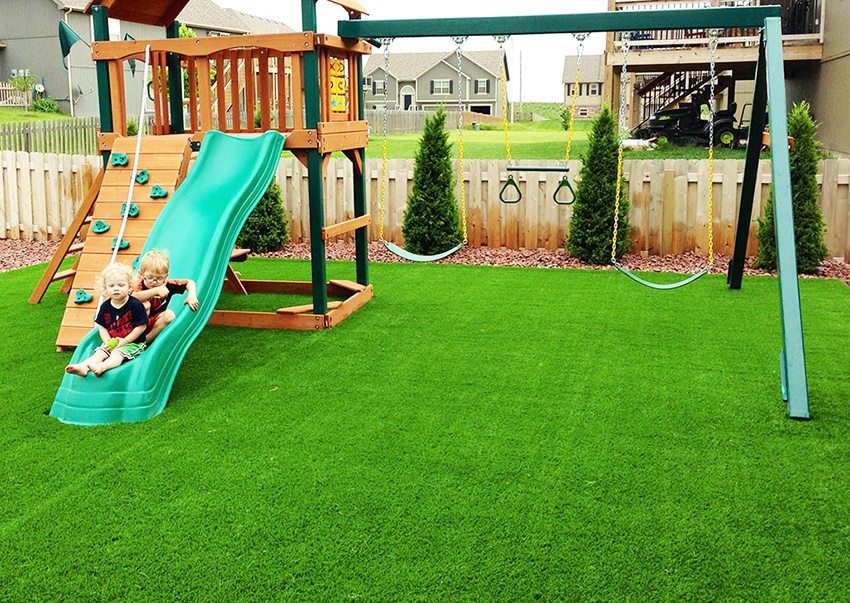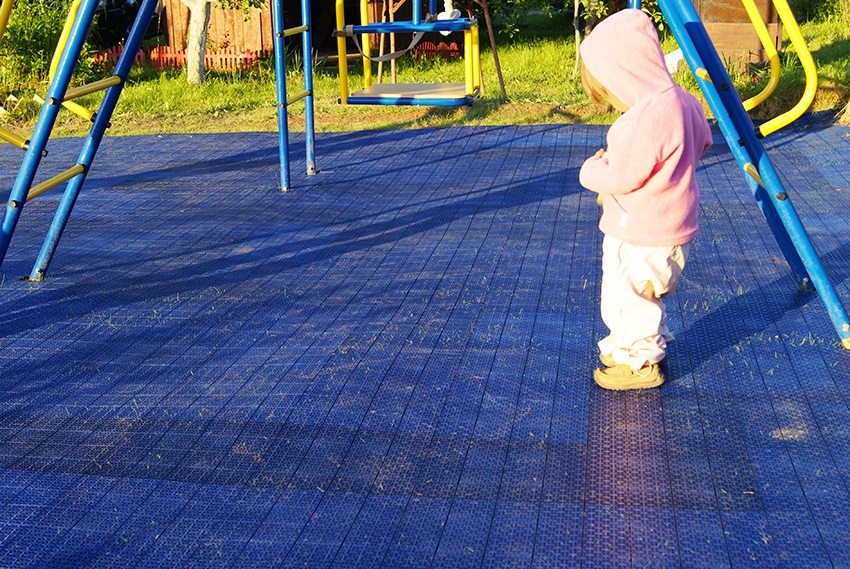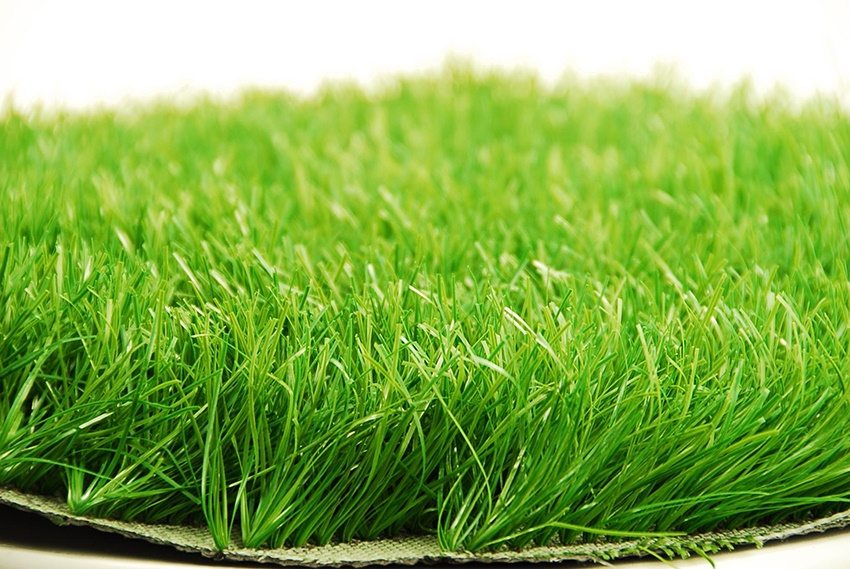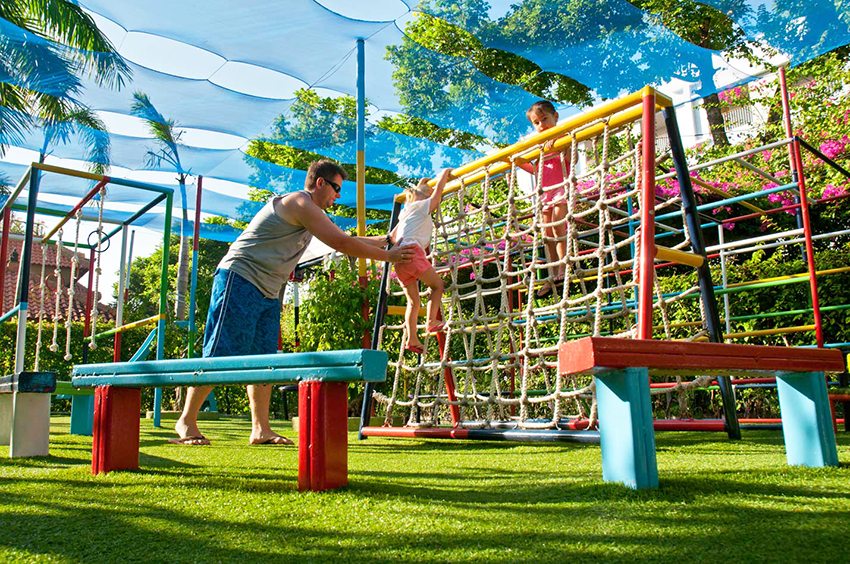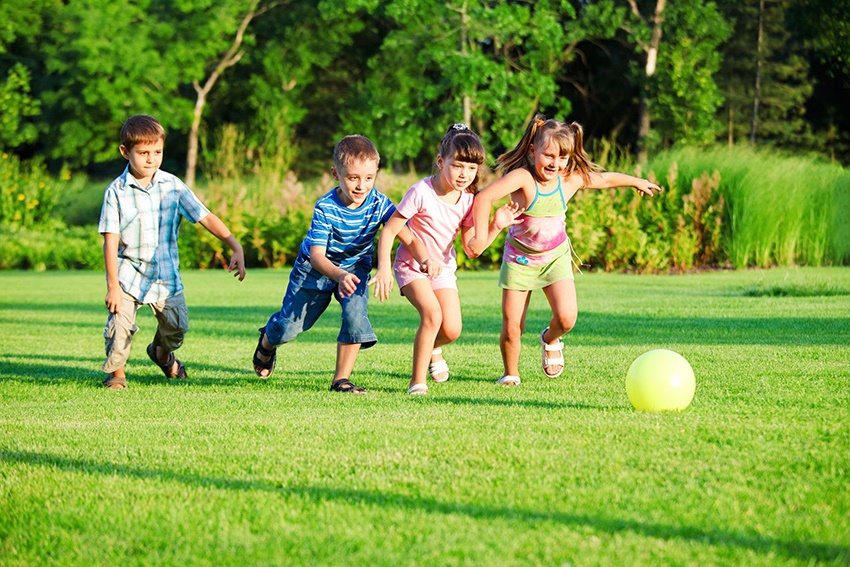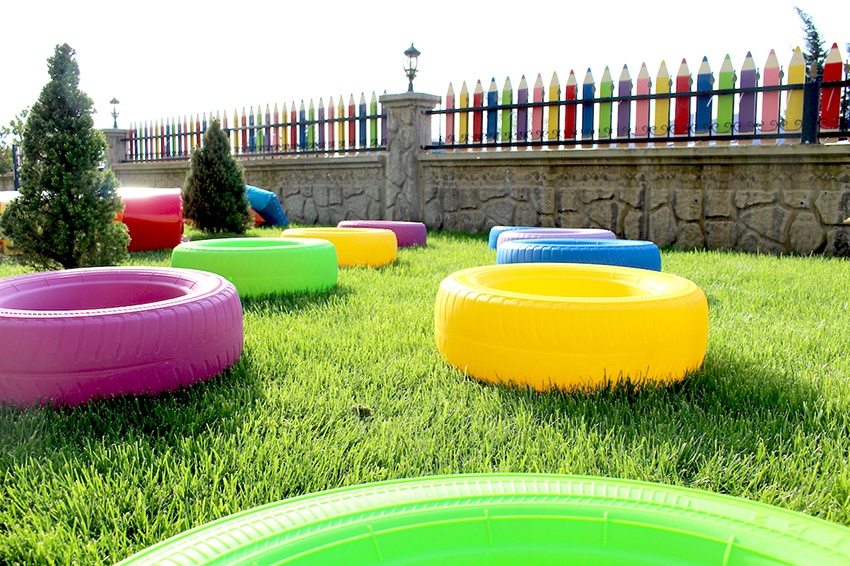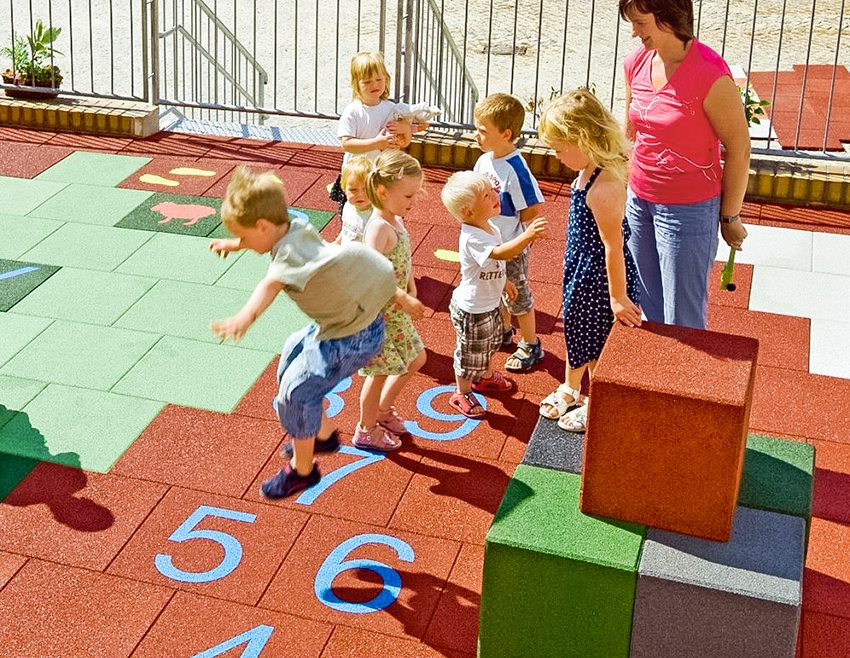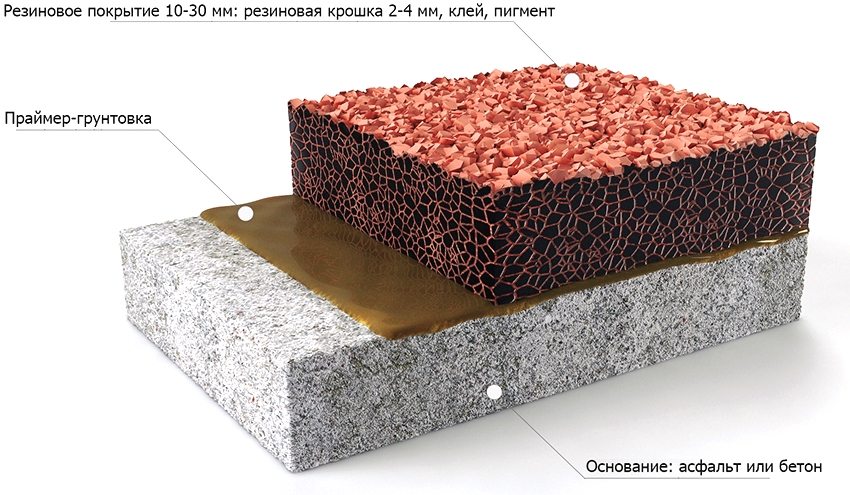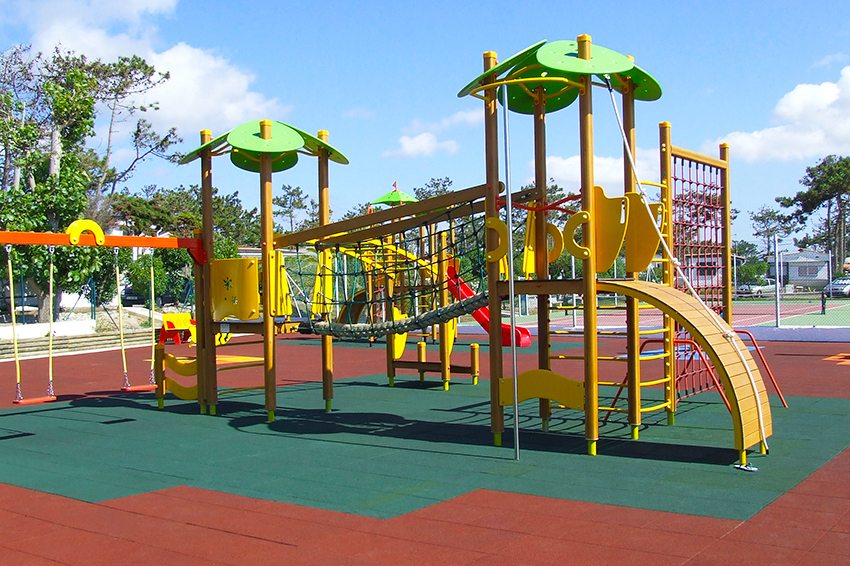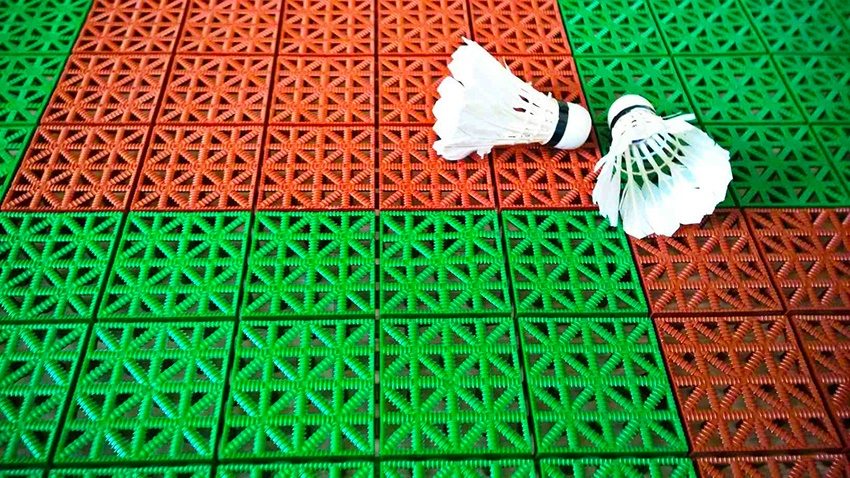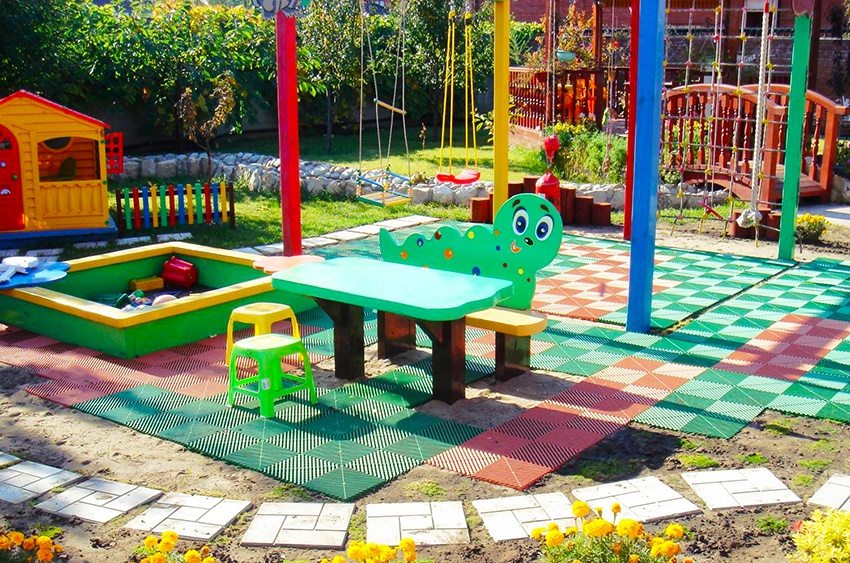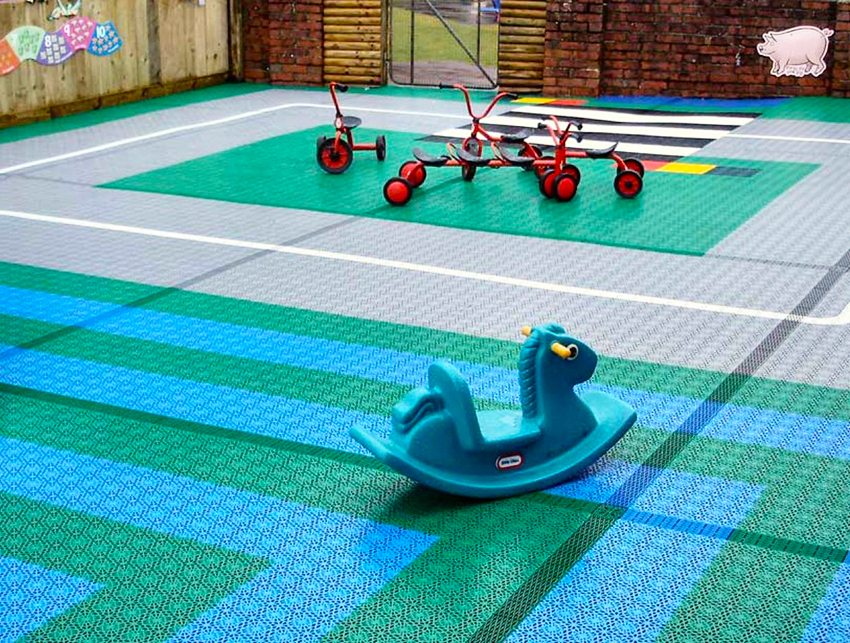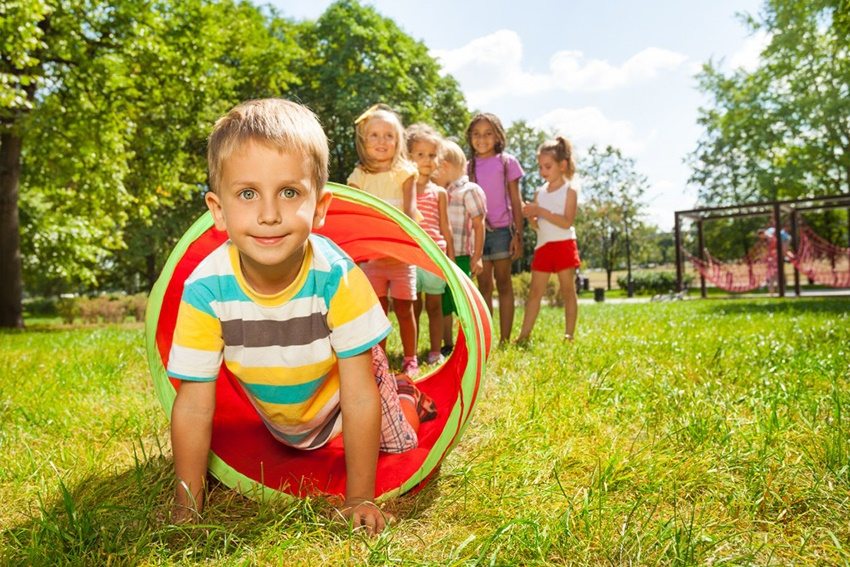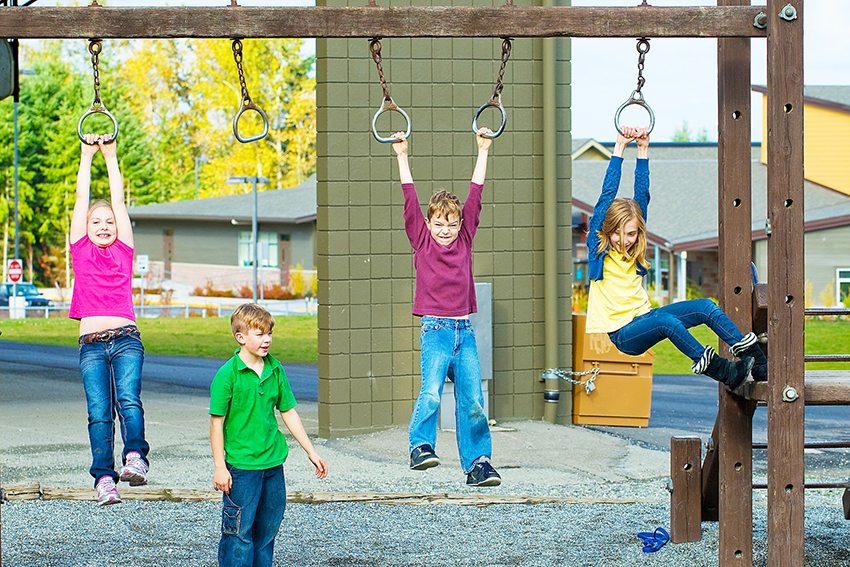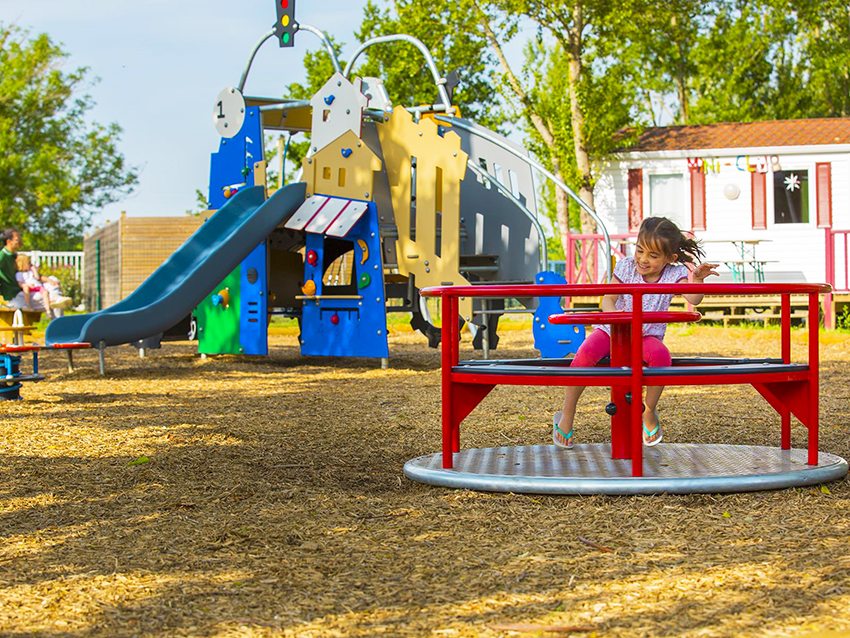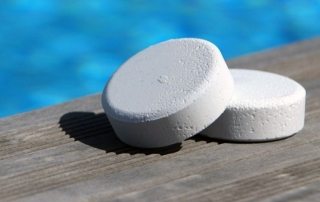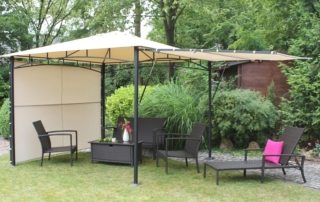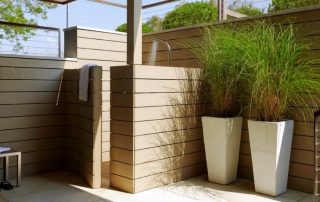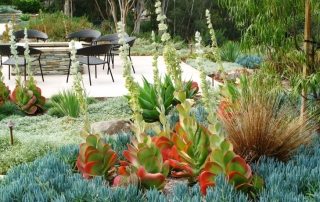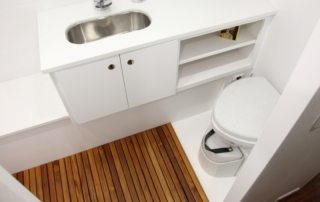When arranging your suburban area, it is very important to foresee all the nuances in advance. This is especially true when it comes to children's playgrounds. It's quite simple to build a sandbox, slide or swing with your own hands, but, in addition to this, you also need to take care of the child's safety during games. Coverage for playgrounds in the country plays a very important role in reducing the risk of injury on the playground.
Content [Hide]
Types and features of floor coverings
All surfaces for outdoor playgrounds can be divided into two types - natural and artificial. The first option includes sand or grass. They can save your budget, but they have a number of disadvantages. For example, when it rains, such a covering turns into a continuous swamp, and the lawn with grass dries up for a long time. In addition, it is quite difficult to remove garbage from a sandy or grassy surface; the lawn must be regularly looked after.
Therefore, many owners of suburban areas opt for artificial turf. This option is more expensive, but has a number of significant advantages:
- artificial turf for playgrounds is absolutely safe, and also boasts a high level of firmness and elasticity;
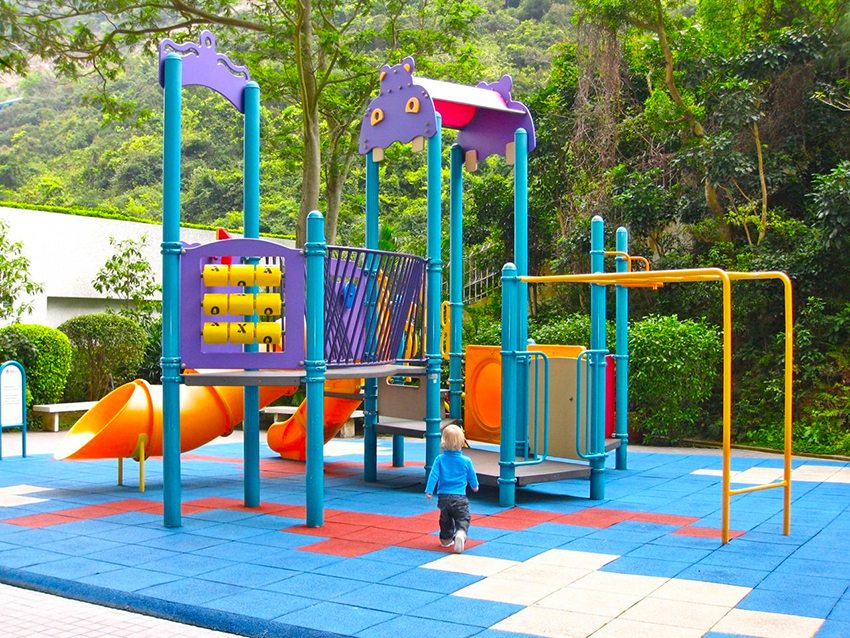
Modular rubber cover does not require a device drainage system
- resistant to temperature extremes, direct sunlight or extreme frosts;
- does not burn or melt;
- does not need special care, is easy to operate and install;
- the artificial surface does not slip after rain, which reduces the risk of injury to a child as a result of a fall;
- it has high moisture-absorbing and drainage properties;
- lasts much longer than natural coatings. It is characterized by high wear resistance.
There are the following types of popular artificial surfaces for a children's playground:
- artificial turf;
- modular rubber cover;
- modular plastic cover.
Useful advice! Laying any modular flooring requires a perfectly flat surface, therefore playground must be prepared in advance. This can be done by pouring asphalt, concrete screed, wood flooring or stone foundations.
Why is artificial grass for a playground good
One of the main differences between synthetic and natural turf is a high level of trampling resistance. Natural grass quickly crumples, paths and bald spots are formed on it. The synthetic version of the coating perfectly tolerates heavy loads and always looks as if it had just been bedded. Also, unlike natural grass, synthetic grass does not stain clothes. The disadvantage of such coverage is that it weakly softens falls, and too high grass can make it difficult for a small child to move around the territory.
The main parameter when choosing an artificial turf for a playground is the height of the grass. This parameter is indicated by the manufacturer in the description of the lawn. In addition, the density of the grass and the thickness of the individual blades should be taken into account. When installing the lawn, first a solid and even surface is poured, for example, of concrete or asphalt.
An outdoor synthetic grass turf is laid in the following sequence:
- debris is removed from the ground, the surface is leveled. If necessary, you can remove the soil layer;
- if the lawn is laid on the ground, and not on asphalt, then it should be tamped with a roller or wide board;
- in order for the soil under the coating not to rot, it is necessary to make a drainage system. To do this, ditches are dug at the construction site through which rainwater will flow;
- when installed on a concrete or asphalt surface, a substrate is laid under the lawn. Each next sheet of the substrate overlaps the previous one by about 1.5 cm;
- after the lawn is spread, let it stand for about 12 hours. This is done so that the blades of grass straighten and stand upright;
- the sheets are laid as tightly as possible to each other, and the joints are filled with special construction glue. Using the same glue, the curb is fixed at the edges of the lawn;
- Backfill or semi-backfill lawns can be sieved with quartz sand. If you do not plan to use sand, then you need to take rubber or rubber granulate instead.
A synthetic turf is a good option for a soft surface for playgrounds where a children's stadium is planned. For example, for playing football, artificial grass is just the perfect surface.
Features of rubber modular cover
Of all the surface options, rubber surfaces for an outdoor sports field are the most injury-free. It also has the following advantages:
- high level of durability;
- does not get confused or erased;
- looks attractive, may have different colors;
- environmentally friendly and does not cause allergies;
- absorbs noise well when children play;
- allows you to realize your wildest design fantasies.
Useful advice! The outflow of moisture on the ground surface is carried out in a natural way, therefore, a slope or drainage system should not be done.
You can lay the rubberized coating for the playground both on a solid base and on the ground. When laying on the ground, use boards with a thickness of 30, 40, 50 or 80 mm. Before installing the cover, the top layer of soil is removed, cleaned of roots and weeds, then leveled and compacted with a roller. After that, a layer of crushed stone up to 100 mm thick is laid out on the ground, onto which a cement-sand mixture is poured.
If you are installing rubber plates on a subgrade, it is best to connect them together using bushings. So the elements of the coating will be securely fixed and will not move during operation.
If the rubber coating is mounted on a base of asphalt or concrete, then everything is somewhat more complicated. The base must be treated with a special primer, which is made by mixing polyurethane glue and acetone in the same proportion. The resulting mixture is applied to the asphalt surface, and it can also be used to prime chips and cracks in concrete. The glue is applied with a roller or trowel, then the tiles are laid, which must be pressed firmly.
When laying a street covering for a playground on a concrete or asphalt base, it is necessary to equip a water drain. The drainage slope should be approximately 2%. The pad can be used after the glue mixture has set.
Benefits of modular plastic sheeting
The modular plastic cover for the playground is a collapsible structure that includes modules of different sizes, made of high quality plastic. This type of coating is not afraid of temperature extremes or prolonged exposure to water, it is environmentally friendly and easy to install. The main difference between plastic modules and other types of coatings is that they can be easily disassembled and just as easily mounted in a new place. If necessary, the modular structure can be moved from place to place even without dismantling.
Another advantage of the modular plastic cover is that it is easy to clean. You just need to rinse it with running water from a hose. Also, the platform with plastic modules can be used immediately, without waiting for the glue to harden or for the base to grab. And if your child has grown up and a special covering for the playground is no longer needed, then the modules simply detach from each other and fold in the garage or closet.
Related article:
Children's outdoor swing for summer cottages and their design features. Advantages and disadvantages of structures made of various materials. Rules for creating a children's swing in a suburban area.
The process of laying plastic sheeting consists of the following steps:
- The grass cover is removed from the site, if any. After that, the surface is covered with sand, which is leveled, filled with water and compacted.
- The modules are assembled into squares with a side of 1 m. For this, the leg of the lock of one module is inserted into the bracket of the other, after which it is necessary to press until a characteristic click.
- The assembled modules are rammed into the base so that the coating does not shift during operation.
The option with plastic is cheaper than a rubber crumb coating for a playground, much easier to install and maintain. In addition, there is no need to organize a drain or a drainage system for plastic modules, since water flows absolutely unhindered through the holes in the coating and goes into the sandy base.
Helpful advice! In winter, a skating rink can be made on the basis of plastic modules. To do this, it is enough just to fill the coating with water, let it freeze, then pour the next layer and so on until the ice of the required thickness is obtained. In the spring, the ice will melt and the water will quickly go into the sand.
Natural coating for playgrounds in the country
If you decide not to spend extra money and use a soft surface for a playground on a natural street, then you need to take into account a number of points that we will consider below.
Do not use gravel or crushed stone as a covering.The child can easily hurt himself against him or simply scatter stones throughout the summer cottage. If you really want to use stones, then choose rolled granite, it is safer and suitable for arranging a sports field.
A rather exotic option is decorative chips. They are soft shavings or soft sawdust and cannot injure a child. Disadvantages of this material: it is easily blown away by the wind, loses its properties in the rain and easily sticks to clothes.
If you are using sand, this is a good option for wet areas, but not good for sports fields. Sand will get into shoes or folds of clothing, making it difficult to cycle or rollerblading. The advantage of sand is that it is environmentally friendly and inexpensive. Installing a sand cover is simply laying and leveling the material.
If you do not want the child's foot to get stuck in the coating, then it is better to use coarse sand. And if there are pets in the house, then you will have to carefully monitor so that the playground does not become part-time cat litter. In addition, this type of coating will need to be cleaned and sieved frequently. When the site is not in use, it can be covered with an awning to prevent debris from entering.
Concrete pouring is the most durable option, good if the site is equipped for roller skating or skateboarding. It is not worth installing on this type of coating swing or a slide, since the level of injury is high. Also, water stays on the concrete for a long time, so take care of the slope and drainage grooves in advance.
A natural grass lawn will cost you less than a synthetic lawn, but it is fraught with stained clothes. Plus, natural grass wears out quickly with regular use, so be prepared to change your lawn frequently. To avoid the regular hassle of replacing, you can use special grades of grass that are used in professional stadiums and sports fields.
A separate headache when using natural turf is weeds. To get rid of them, you will have to use special chemical compounds. In addition, natural lawns should be mowed regularly. From all of the above, it is clear that caring for natural grass will take a lot of time and effort, so it is worthwhile to think several times whether it is better to overpay for synthetic, but save yourself from wasting time and effort.
A good soft flooring option for playgrounds is a combination of different materials. For example, it is advisable to use natural or synthetic turf for a football field, asphalt in places for cycling or rollerblading, and soft rubber flooring near swings and slides. Thus, you will create the ideal surface for each of the areas of the children's playground, save money and get a well-planned area.
Whichever surface you choose for the playground, it, first of all, should be safe for the child. The rest of the parameters should be chosen depending on the purpose for which the playground is equipped, how old your child is, what natural conditions in your region, and so on. Remember that the right coating material is the absence of injuries for your child and, accordingly, your peace of mind.

